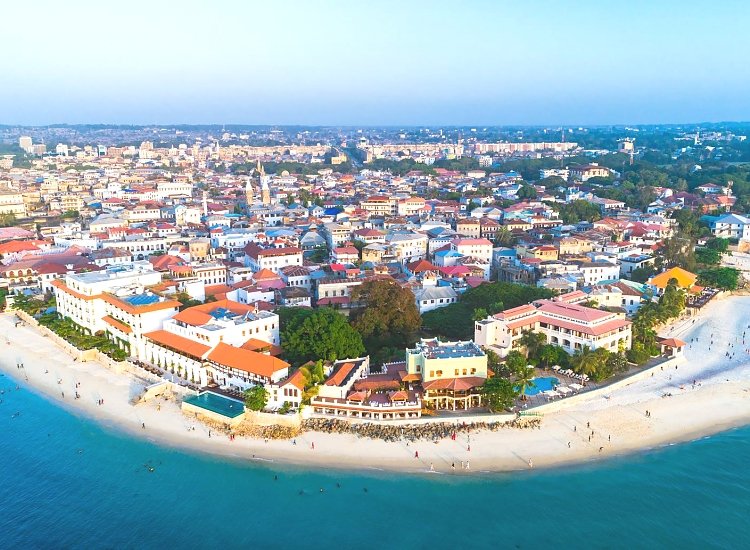The Zanzibar Archipelago, located off the coast of mainland Tanzania in the Indian Ocean, has become one of Africa’s most fascinating travel destinations. Known for its white-sand beaches, vibrant culture, and rich history, this group of islands offers travelers a unique experience shaped by centuries of trade, cultural exchange, and natural beauty.
The archipelago consists of several islands, the most notable being Unguja, commonly referred to as Zanzibar Island, and Pemba Island. Unguja is the largest and most developed, home to the historic Stone Town, a UNESCO World Heritage Site, and the semi-autonomous government of Zanzibar. Stone Town’s narrow alleys, carved wooden doors, and coral stone buildings reflect a mix of Swahili, Arab, Persian, and European influences, offering visitors a rare glimpse into the region’s past.
Pemba Island, the second largest, is less commercialized than Unguja and known for its lush vegetation, spice farms, and excellent diving spots. The island remains deeply connected to its traditional roots and is a peaceful retreat for those seeking quiet and authenticity. Smaller islands and islets, including Mnemba, Chumbe, Tumbatu, and Prison Island, are popular for snorkeling, eco-tourism, and day trips.
Historically, the Zanzibar Archipelago was a vital stop along the ancient Indian Ocean trade routes. Arab and Persian traders settled here as early as the 10th century, followed by Portuguese and later Omani rulers. In the 17th century, Zanzibar became part of the Omani Sultanate and even served as its capital. During the 19th century, Zanzibar became a key center for the East African spice and slave trades. The legacy of that time is still visible in the architecture, traditions, and cultural diversity of the islands. In 1890, the British declared Zanzibar a protectorate, which lasted until its independence in 1963. A year later, Zanzibar united with Tanganyika to form the modern state of Tanzania.
The cultural identity of Zanzibar today is strongly Swahili, shaped by a blend of African, Arab, Indian, and European influences. Swahili is the main language, and Islam is the dominant religion. Festivals, music, clothing, and food all reflect this cultural mixture, making the islands a rich destination for cultural exploration. Travelers are especially drawn to Stone Town, where historical buildings, museums, and bustling markets offer a deep dive into local traditions and heritage.
Tourism is one of the main economic drivers in the Zanzibar Archipelago. The region attracts visitors with its wide array of attractions. The beaches of Nungwi, Kendwa, Paje, and Jambiani are famous for their powdery sand and turquoise waters. Water activities like scuba diving, snorkeling, and dhow sailing trips are widely available. Nature lovers can explore the Jozani Forest, home to the rare red colobus monkey, or visit Chumbe Island Coral Park, a marine reserve known for its pristine reef systems and eco-friendly lodges.
Spice tours are also a key attraction. Zanzibar has long been known as the “Spice Island” due to its production of cloves, cinnamon, nutmeg, and other spices. Many guided tours take visitors through spice plantations, where they can see, smell, and taste a variety of tropical plants while learning about their uses and cultural importance.
In recent years, the Zanzibar Archipelago has made efforts to promote sustainable tourism. Many hotels and lodges use eco-friendly designs and practices. Marine conservation zones help protect coral reefs, and local communities are increasingly involved in tourism projects. These efforts aim to ensure that the islands’ natural and cultural treasures are preserved for future generations.
With easy access by air and ferry from mainland Tanzania, the Zanzibar Archipelago is a gateway to both adventure and relaxation. Whether exploring Stone Town’s history, diving into warm coastal waters, or relaxing on an untouched beach, visitors will find a destination that blends beauty, history, and hospitality in perfect harmony.







